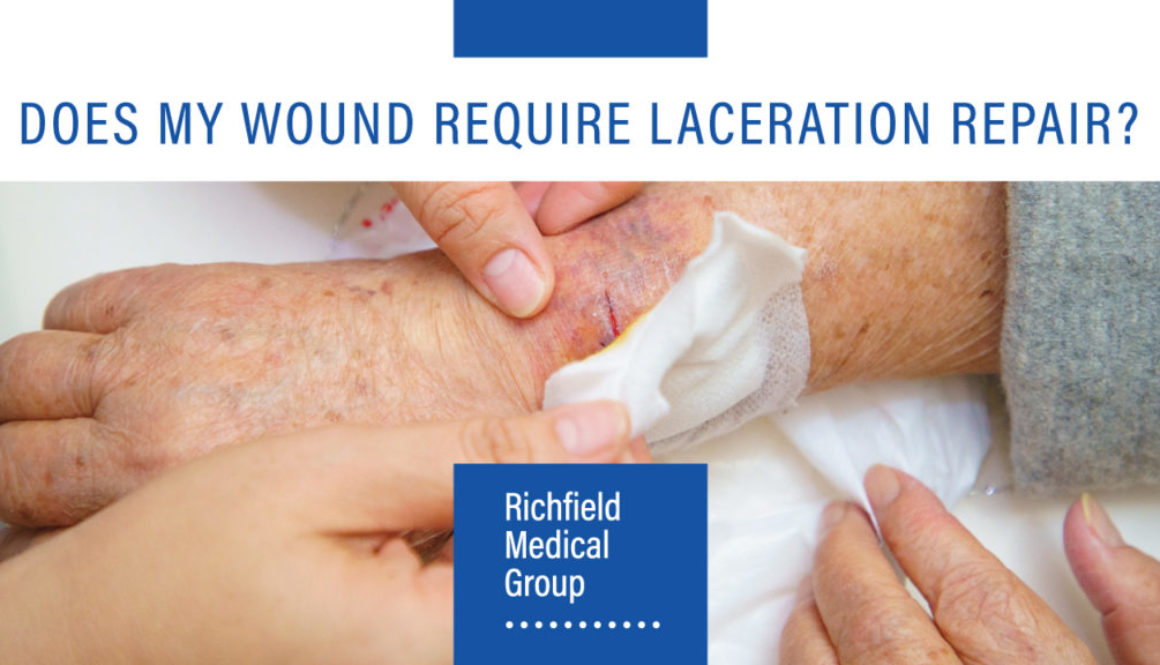Does My Wound Require Laceration Repair?
We’ve all been there at least once: you’re cooking dinner and the knife slips and you cut yourself. If you’re lucky, you can tend to the wound efficiently with your own first aid supplies, but what if the cut is deep and you aren’t sure if it needs stitches? The size, depth, and location of the wound, among other factors, all play a role in determining whether you should rush to the emergency room for laceration repair.
Here are some telltale signs that your wound requires laceration repair.
The Wound Is Deep
Even a wound or cut that is small in length can require laceration repair if it is deep enough. Deep cuts can be deceptive, so pay attention to the severity of bleeding. If the wound continues to bleed for a long time, it may be a sign the wound is deep and requires stitches. If, when you gently squeeze the wound, the two sides of skin on each side do not come together, this is another sign of a deep cut that requires attention. A long gash or wound should also be attended to. A general rule of thumb is that if the wound is an inch or longer you should get stitches. In addition, if fatty tissue, muscle, or bone is exposed, you should most certainly seek laceration repair.
The Wound Bleeds Excessively
A less serious wound will usually stop bleeding after a few minutes of light but constant pressure. If, after applying pressure for up to ten minutes, the wound still does not stop bleeding, this is a definite sign you are in need of laceration repair. If blood spurts out of the wound, it is not likely to stop on its own and should be treated with stitches. When applying pressure to the wound, if the blood soaks through the towel or bandage it is probably going to require laceration repair.
The Wound Location Is of Concern
The location of the wound is also a huge determining factor as to whether you should seek laceration repair. A small nick on the finger is not the same thing as a wound on a joint, for example. Wounds over joints will most likely require stitches due to the fact that joints are often in motion, which will exacerbate the severity of a wound and prevent it from healing properly. Joints and the surrounding area contain ligaments and tendons, which should be protected by getting stitches. Any location where a wound might impair a person’s daily functions, such as a wound to the eye area or face, should also be stitched, in part for cosmetic reasons, but also for safety concerns.
In addition to the factors mentioned above, pay attention to the redness surrounding a wound, to its temperature (does it feel warm to the touch?), and to any swelling or possible pus accumulation, which could be a sign of infection. If there is debris or other matter in the wound, it should be treated by a clinician and stitches may be required. If you come down with a fever following obtaining the wound, this is another sign of possible infection that should be treated by a clinician.
Consult Our Physicians On Wound Treatment
Staying informed and being prepared for medical emergencies such as wounds is a form of preventative health care. At Richfield Medical Group, we are passionate about keeping our patients informed and prepared while improving and sustaining their health. As a medical group dedicated to preventative health care, we are home to a care team of dedicated clinicians ready to take an active role in your health. If you have any questions about a wound that may require laceration repair or about any other medical topic, we are here to help. Visit us at richfieldmedicalgroup.com.




